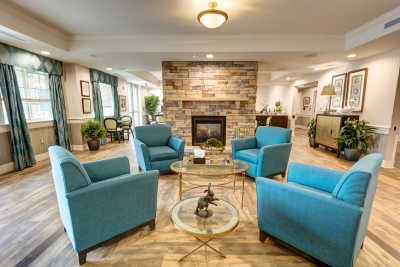Premier Charlotte Memory Care: Enhancing Lifestyle for Senior citizens
Premier Charlotte Memory Care: Enhancing Lifestyle for Senior citizens
Blog Article
Creating a Safe and Encouraging Atmosphere: In-Home Memory Care Basics
Establishing a caring and protected environment for people requiring at home memory care is extremely important to their wellness and quality of life. From guaranteeing safety and security within the living room to employing efficient interaction strategies and applying memory-friendly style elements, there are important components that add to an all natural care approach. By concentrating on creating a supportive ecological community that provides to the distinct demands of those with memory problems, caregivers can substantially boost the everyday experiences of their enjoyed ones.

Safe Living Setting
Developing a hazard-free and safe living setting is extremely important when giving at home memory treatment for people with cognitive disabilities. Ensuring the safety of the individual with memory loss is important to stop mishaps and advertise a feeling of health.
In addition, it is very important to mount security functions such as grab bars in shower rooms and hand rails along staircases to offer support and prevent accidents. Furthermore, utilizing innovation such as movement sensors and alarm systems can alert caregivers if the individual wanders or remains in distress. Developing a safe living environment also involves applying approaches to protect against roaming, such as making use of door alarms or locks to restrict access to harmful locations. By prioritizing precaution and removing possible dangers, caregivers can give a secure and encouraging setting for individuals with cognitive problems getting in-home memory treatment.
Reliable Communication Methods
Implementing tailored communication techniques is essential in promoting purposeful interactions with people with cognitive impairments in the context of at home memory treatment. Effective interaction plays a crucial function in developing a supportive atmosphere that boosts the well-being and high quality of life for individuals with memory concerns. When communicating with someone experiencing cognitive decline, it is necessary to use simple and clear language, keep a tranquility and positive tone, and offer visual hints to aid comprehension.
One secret method is to exercise energetic listening, showing compassion, patience, and regard during discussions. Non-verbal hints such as faces and body movement can additionally aid share understanding and support. Additionally, utilizing reminiscence treatment by utilizing or reviewing previous experiences songs and art can touch right into lasting memories, stimulating and stimulating links interaction.
Moreover, incorporating regular routines and regular interaction patterns can supply a feeling of experience and protection for people with memory disabilities. By carrying out these interaction approaches, caretakers can establish significant connections and advertise a feeling of convenience and trust in the in-home memory treatment setup.
Memory-Friendly Style
Given the importance of developing a helpful environment for people with memory concerns with reliable interaction techniques, the incorporation of memory-friendly layout aspects in the home ends up being important in optimizing their daily experiences and total health. Memory-friendly design concentrates on improving safety, convenience, and self-reliance for individuals with cognitive problems. Straightforward adjustments can make a significant distinction, such as using contrasting shades to improve presence and decrease complication, integrating clear signs to aid navigating, and reducing clutter to stop sensory overload.
Incorporating acquainted elements from the individual's past, such as favored items or individual images, can evoke favorable memories and create a sense of knowledge. Additionally, find this making certain appropriate lighting levels, setting up grab bars in bathrooms, and executing non-slip floor covering can assist protect against falls and injuries. Producing a relaxing and soothing environment with using familiar scents, soft structures, and relaxed noises can likewise advertise leisure and reduce frustration. By incorporating these memory-friendly design aspects, caretakers can give a helpful and secure space that enables individuals with memory problems to preserve their self-reliance and quality of life.
Daily Routine Planning
When establishing a day-to-day regimen for individuals with memory problems, cautious preparation is crucial to support their cognitive feature and general well-being. Establishing an organized timetable can help lower disorientation, confusion, and stress and anxiety often experienced by those with memory problems.
Flexibility is essential, as some Resources days may need modifications based on the individual's mood and energy levels. Frequently examining and adapting the daily schedule will help ensure its effectiveness in promoting a favorable and soothing atmosphere for individuals with memory difficulties.
Assistance System Execution
Establishing a robust network of helpful individuals plays an essential duty in enhancing the high quality of care and wellness for people requiring memory assistance. Member of the family, good friends, medical care specialists, and area resources can all add to creating a solid support group. Communication among these people is important to make certain that the demands of the private with memory challenges are satisfied successfully.
Relative are often the key caretakers and create the backbone of the assistance system. They check out this site offer day-to-day care, psychological support, and friendship. When needed to stop fatigue and guarantee the ideal possible care for their liked one., it is important for household members to seek aid and reprieve.
Along with household assistance, entailing healthcare experts such as therapists, nurses, and physicians can offer customized treatment and guidance. These professionals can provide useful understandings, clinical suggestions, and assistance in handling the person's problem.

Final Thought
Finally, developing a safe and supportive environment for individuals with memory care demands is important for their well-being. By establishing a safe living environment, utilizing effective interaction methods, including memory-friendly style aspects, preparing everyday routines, and implementing a solid support group, caretakers can assist enhance the high quality of life for those with memory loss. These important components interact to create a nurturing and empowering setting that advertises self-reliance and improves overall high quality of life.
Producing a hazard-free and secure living setting is vital when offering in-home memory care for individuals with cognitive impairments. By focusing on safety procedures and eliminating potential threats, caregivers can give a safe and helpful environment for people with cognitive disabilities receiving at home memory care.
Developing a robust network of encouraging individuals plays a pivotal function in enhancing the top quality of care and health for individuals needing memory support - Charlotte Memory Care. Interaction amongst these people is vital to ensure that the requirements of the individual with memory difficulties are met properly

Report this page